



Working with clients takes too much time, no matter what kind of WISP you are. And it’s incredibly annoying when you need to quickly find a group of customers without breaking a leg by clicking on different filters. So, to help with different day-to-day operational tasks and make life easier for everyone, Splynx designed a useful new feature called Labels.
Imagine you have a large bookshelf with hundreds of books, but no labels or categories indicating what each book is about. Finding a specific book, let’s say, a cookbook or a mystery novel, is time-consuming. Now, suppose you decide to organize these books into sections with clear tags such as “Cooking”, “Science fiction”, “History”, etc. Suddenly, finding precisely what you’re looking for becomes much more accessible without scanning every book.
Labels feature in Splynx works similarly. It helps organize a diverse WISP client base by categorizing various elements with tags for targeted service offerings, efficient support, and better management. More specifically, it works with Customers, Services, and Tickets. To clarify it, similar functionality might be called Tags in many other systems. This makes it much simpler for teams to filter and retrieve specific data quickly, improving the system’s efficiency and management of daily operations. For example, you can tag specific customers as “Premium” or categorize tickets by issue type, like “Billing” or “Technical.” So, the phrase “A place for everything, and everything in its place” captures how the Labels feature organizes and categorizes elements in the system for more efficient management and retrieval.
Now let’s dive into more practical use of tags. Here’s how Splynx customers already use it and how else they can make the most of this feature. You start by creating tags under Config → System → Labels. It’s quite straightforward — click on Add a label, give it a name, and select a color (from a palette or use a hex code for more precision) that stands out. Labels can be edited or deleted through action icons beside each tag in the management interface. To create and configure labels, go to Config → System → Labels.
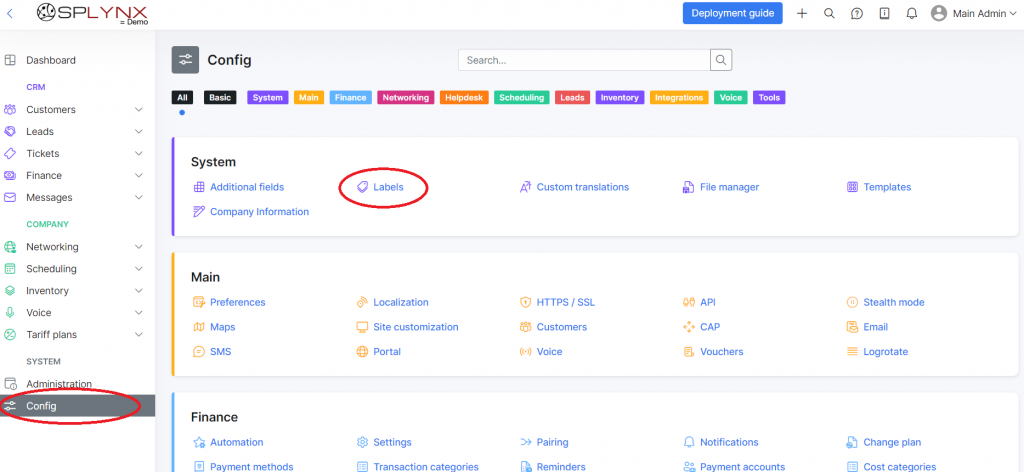
Once all are set up, applying them to customers is simple. Add one or multiple for each customer profile (Information tab → Additional Information). Also, you can quickly organize the entire customer base in one step by dividing them into groups by tags. This classification can directly influence the kind of interaction and services you offer. For instance, it’s common for local WISPs to resell services from larger providers or telcos. So, applying a custom tag to this group of customers will make future management much easier. To apply a mass action for labels, select customers from the list → Actions→ Labels in the drop-down menu.
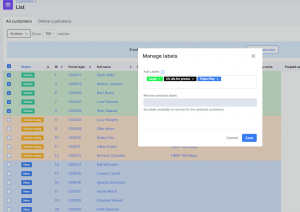
Here’s where it gets interesting. Labels aren’t just about categorization — they are more like a gateway to automation and customization. Let’s say you want to filter your customer list to focus on a specific group for a promotional campaign. With labels, WISP can quickly pull up all customers tagged under a specific label. This capability extends to the Splynx customer portal section, where service availability (Internet, Voice, Recurring, or Bundle) can be managed with tags. Only customers with certain tags can see and order specific services, making offers more personalized.
Moreover, Labels complement our configurable ticket system, more — here. New Labels help create additional fulfillment when needed. For example, adding the tag “Billing queries” may come in handy for a finance manager to quickly and easily summarize all related tickets. This will allow efficient reporting and continuous tracking of different requests without worrying about missing something. Read more about the feature here.
Every business is unique and has its own needs. We looked at how our customers use the feature and found out what they usually do. For now, labels are most commonly used to indicate various services, types of billing, service areas, types of services (especially for reselling ones), various promotional campaigns (sometimes with specific pricing), or just reminders or internal memos, etc. Examples of customizable Labels for Customers in Splynx:
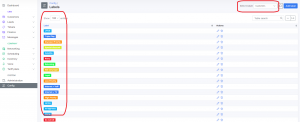
We tried to figure out what WISP needs, whether small or big. Here are some possible ways to use Labels in Splynx to manage Customers, Services, and Tickets.
Customers
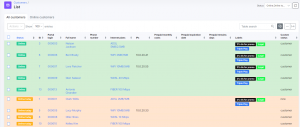
Services

Tickets
Issue type, urgency, and custom interaction are configured separately in Splynx and can be automated. The value of tags is about additional categorization for further filtering. It is generally easier to communicate and manage volumes, which will be most useful for bigger WISP. Example Labels can be “Billing Inquiry”, “Technical Problems”, “Service Upgrade Request”, etc.
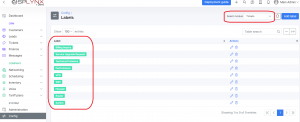
This can facilitate quicker response times by directing tickets to appropriate support teams and aids in prioritizing issue resolution based on their impact. It’s also more efficient for reporting and tracking the most common types of tickets to improve efficiency.

If you are looking for a WISP management platform without the need for manual billing and admin work, with a redundant, automated network and top-performing customer support, Splynx is your go-to solution. So you can give it a test drive with a 15-day free trial to check everything live without feature limitations HERE.
We also use Splynx for business management, actively utilize all the features, and carefully analyze how other providers use them to improve further. Labels show good potential for easier work with clients, which is the main thing in our field. First and foremost, it saves time and resources for teams, who can instead be more efficient and focus on other tasks.
So please try it and recommend it to your friends if they’re looking for something like this. Gently reminder: Please let us know which feature is missing the most or vote for the one already proposed on our feature request website so we can add it as soon as possible.
Find out how Splynx helps ISPs grow
Learn more